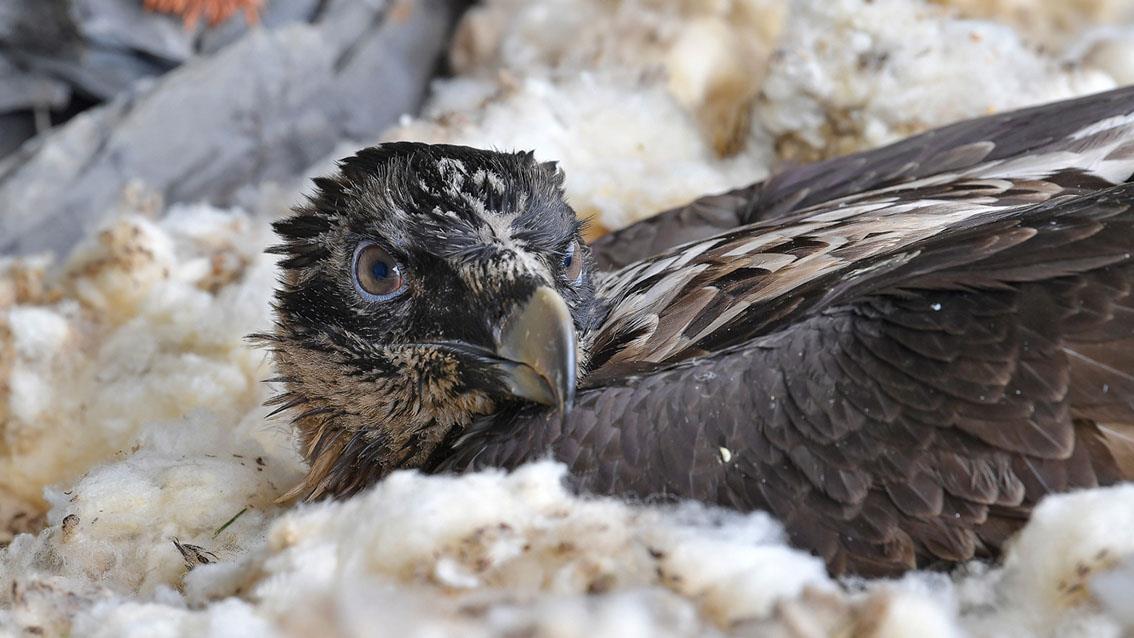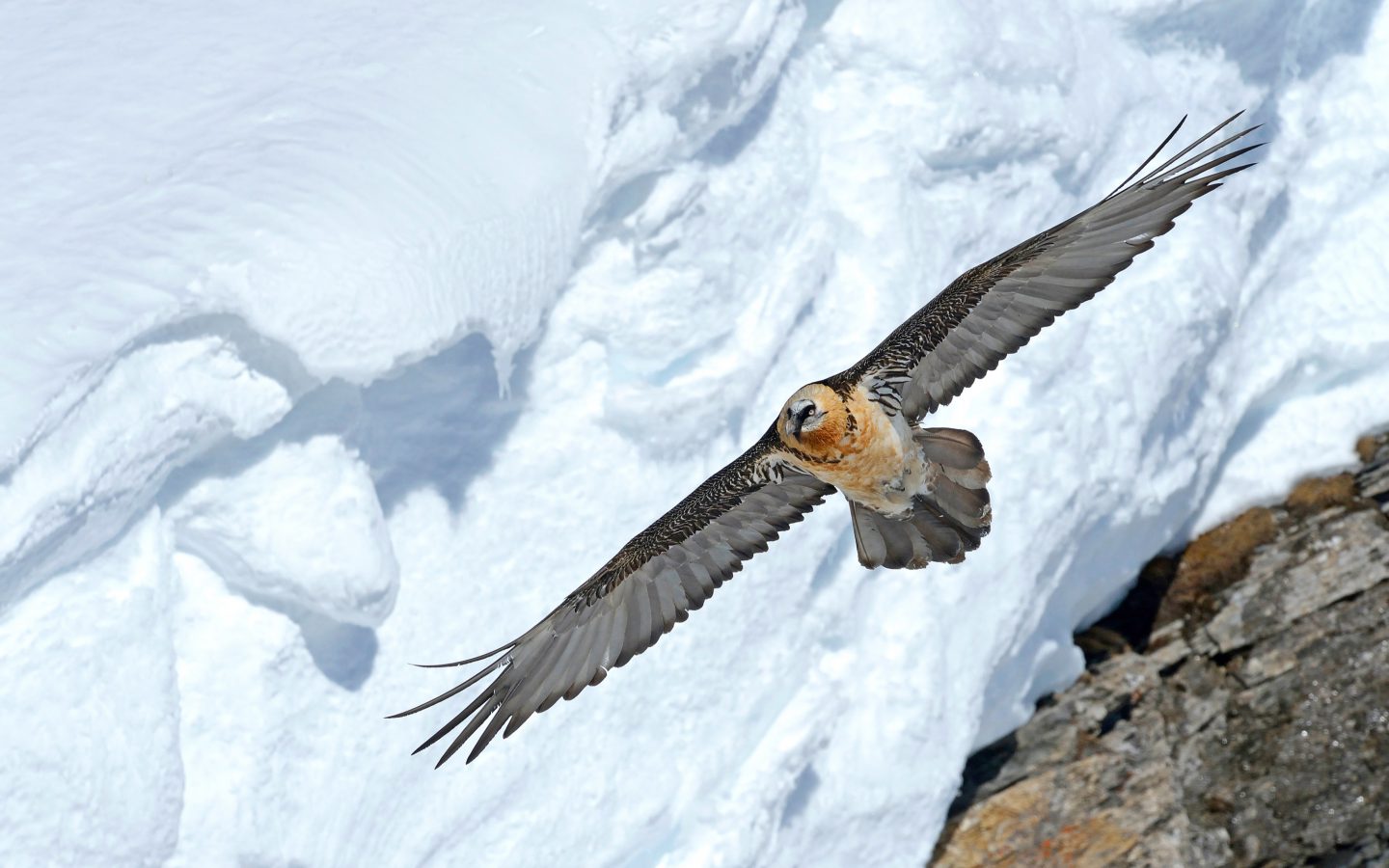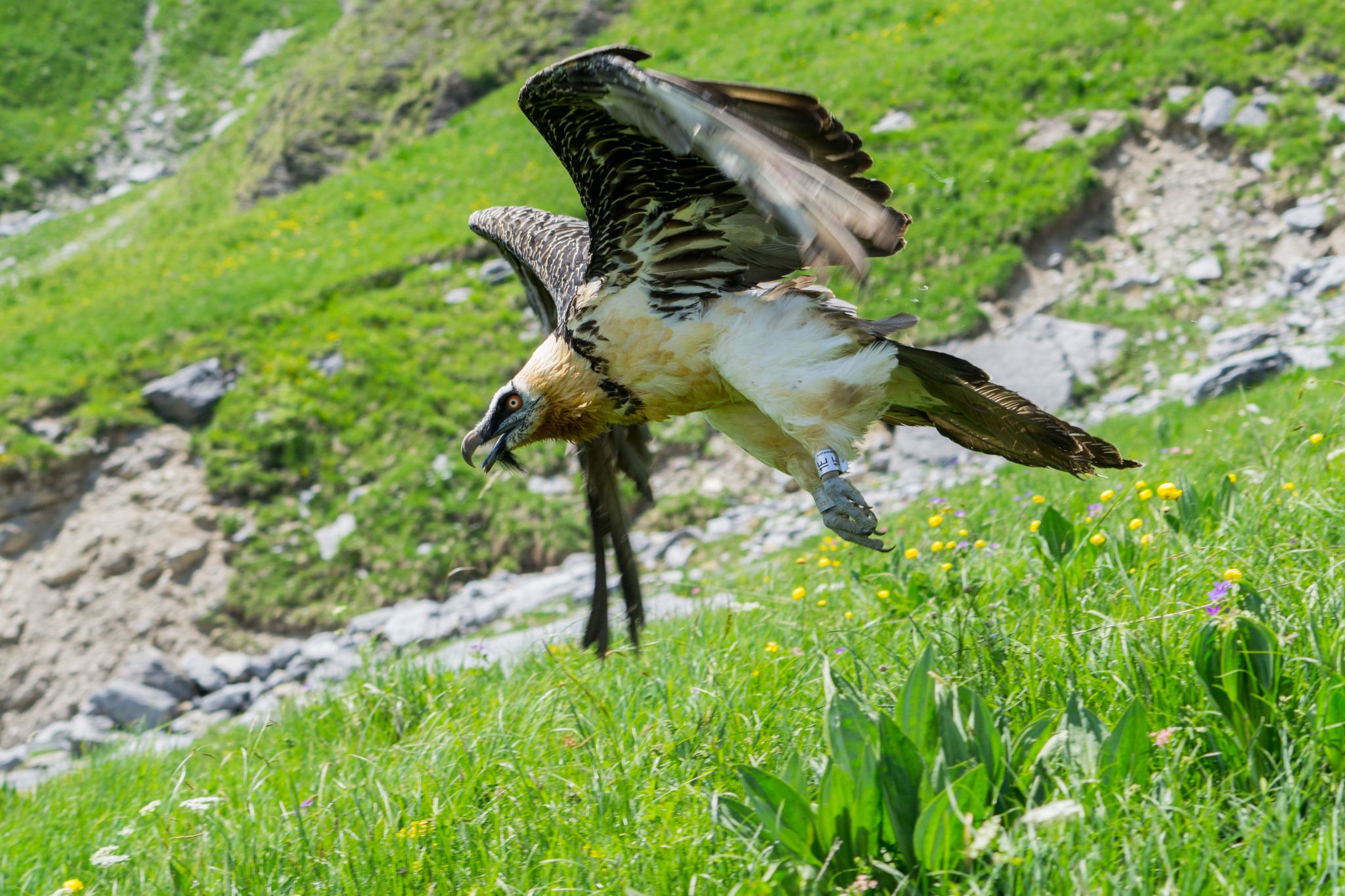Once upon a time—well, ten years ago—high in the cliffs of Andalusia, a very special Bearded Vulture (Gypeatus Barbatus) took her first wobbly steps into the world. Her name was “Esperanza”, which means hope in Spanish.
She wasn’t just any chick. She was the first wild-hatched Bearded Vulture from a reintroduced pair, brought back into Andalusia after the species had disappeared from the region in the 80s.
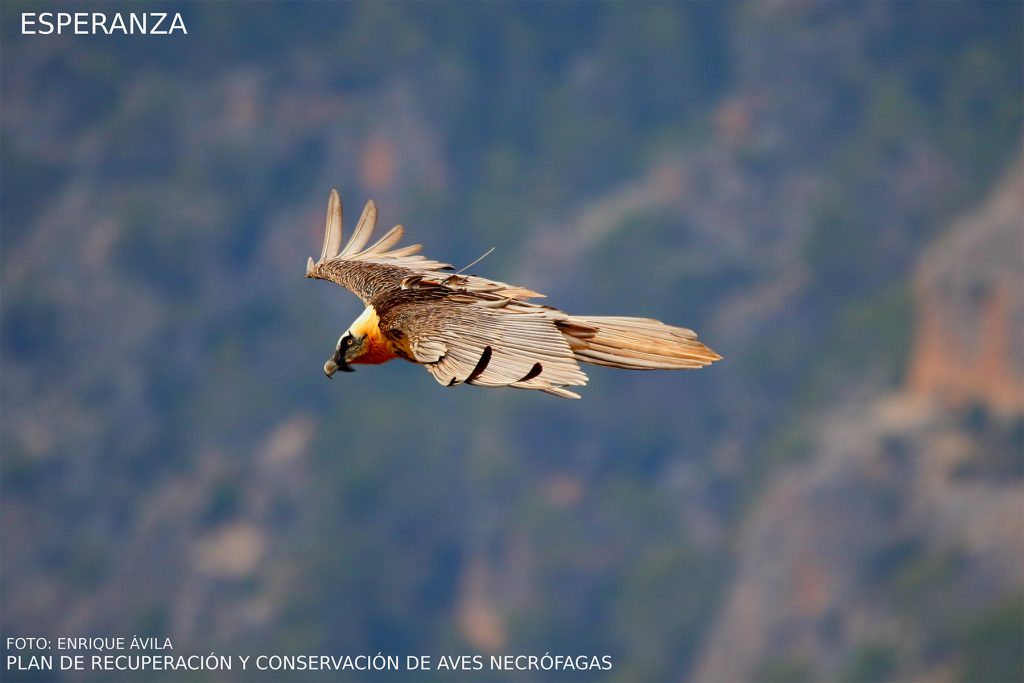
An extraordinary vulture
Esperanza’s story begins with her remarkable parents, Toño and Blimunda — both reintroduced into the wild from different centres in the Bearded Vulture EEP network. The male, “Toño”, was one of the first vultures released when the Andalusian reintroduction project began in 2006. The female, “Blimunda”, followed in 2010. They formed a pair and, in 2015, became the first reintroduced Bearded Vultures to successfully breed in the wild in Andalusia.
Blimunda was only four and a half years old when she laid her egg — unusually young, as the species typically begins breeding between eight and ten years old. Hopes were cautious; no one expected success from this early attempt. Yet when climbers carefully approached the remote cliffside nest, they were met with a surprise: a healthy chick. She was examined, tagged with rings and a GPS transmitter, and given a name that would later carry great symbolic weight.
Esperanza settles in Andalusia
For a long time, Esperanza kept the monitoring team in suspense. After fledging, a transmitter malfunction left her whereabouts unknown, and fears grew that she might not have survived. Then, in February 2019, came a breakthrough — Esperanza was spotted again, soaring across Spanish mountain ranges. Eventually, it was confirmed she had settled permanently in Andalusia, forming a stable group with two other Bearded Vultures, Miguel and Nerpio.
In early 2022, a field team from the Junta de Andalucía’s Coordinación Plan de Recuperación de Aves Necrófagas made a remarkable discovery: Esperanza, at the time seven years old, was building her first nest.
First time mother
Now, fast forward to spring 2025, Esperanza has become a mother for the first time.
In the same region where she once took her first flights, Esperanza is now raising her first chick. In June 2025, a monitoring team visited the nest and found the fluffy young vulture. Then, just like Esperanza had been ten years earlier, the chick was fitted with identification rings and a GPS transmitter. In that moment, the cycle of hope continued.
Esperanza’s journey from a hatchling to having her own family is more than just a touching story — it’s a turning point. It shows that reintroduced Bearded Vultures can not only survive in the wild, but thrive, mature, and contribute to the next generation. For the reintroduction project, it’s a moment of triumph that proves the long-term vision is working.

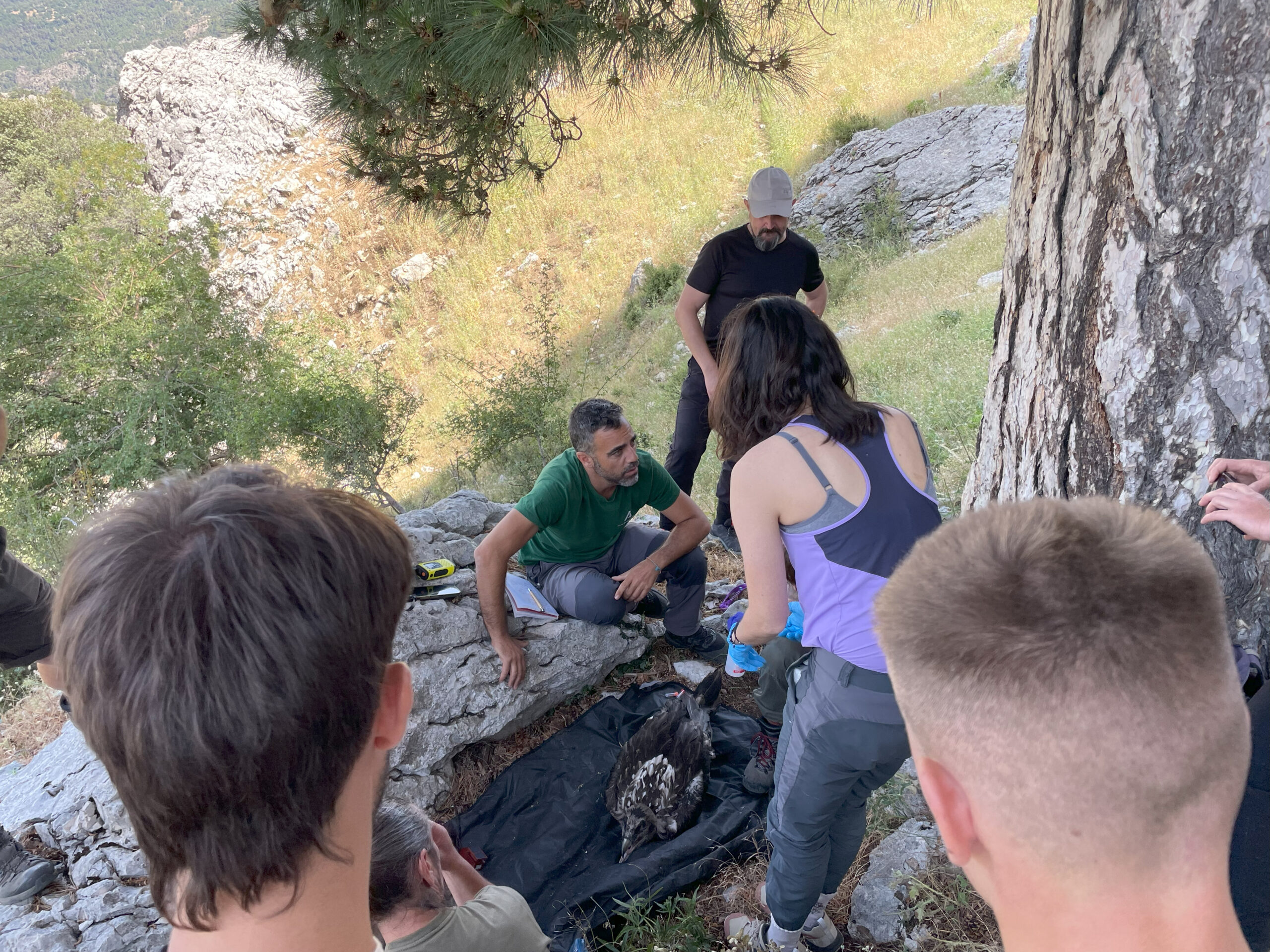
Breaking records and building nests
Esperanza’s chick is part of a record-breaking Bearded Vulture breeding season in Andalusia. This year, 11 breeding pairs have been confirmed in Andalusia, shattering the symbolic double-digit ceiling for the first time ever.
Nine of these couples are nesting in the Natural Park of Sierras de Cazorla, Segura, and Las Villas, while two have set up home in Sierra de Castril. Additionally, six new chicks were released in June 2025: Poqueira, Polarda, and Aznaitín in Sierra Nevada and Jaén, Granada and Acosta in Cazorla.
So the future looks bright but now comes the nail-biting part: will Esperanza’s chick take to the skies and adjust well? The monitoring teams are high alert and we will keep you updated!
The Bearded Vulture reintroduction project in Andalusia
Bearded Vultures disappeared from the skies of Andalusia in 1986 due to various threats including direct persecution, illegal wildlife poisoning and human disturbance of the nesting sites. The Junta de Andalucía teamed up with the former Fundación Gypaetus, and us here at the Vulture Conservation Foundation (VCF) to reintroduce the species in Andalusia by releasing captive-bred birds at different territories — Sierras de Cazorla, Segura, Castril and Las Villas. The Bearded Vulture reintroduction project in Andalusia began in 1996 with the first captive-bred birds released in 2006.
